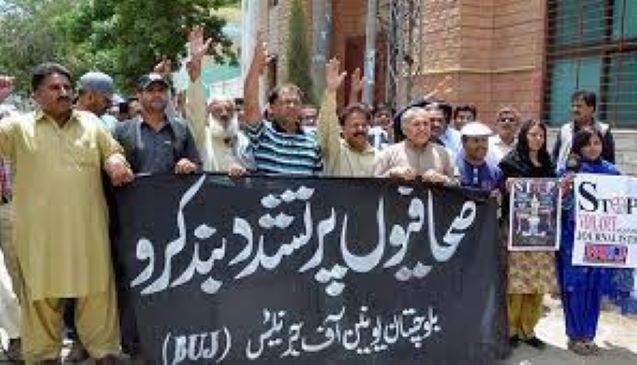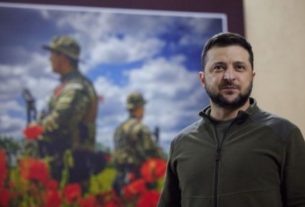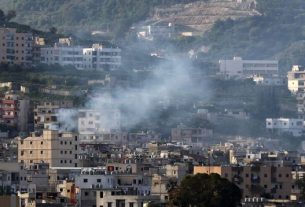According to the International Federation of Journalists (IFJ), Pakistan is the fifth most dangerous country for journalists to practice their profession.
Safety trainings play a vital role for journalist’s safety during their reporting because when they are aware of safety precautions, they can avoid mistakes that could put them in harm way.
Ali Imran, who was previously a trainee producer of Pakistan Television (PTV) current affairs show said, “During the Swat war and Lal Masjid incident, we were not trained and that’s why we made mistakes.” Imran said that had had received two trainings prior to these incidents but they were in investigative journalism and not physical security.
In Pakistan some journalists have been trained or get training from foreign organisations and civil society organisations, but the main responsibility for providing safety training for journalist rests with the employers and the provincial and federal governments.
Journalists learn theoretical perspectives during their studies, but when they come to the field, they face many challenges and threats in practical work. They face violence and intimidation for exercising their fundamental right to freedom of expression. The range of threats they are confronted to include murder, kidnapping, hostage-taking, offline and online harassment, intimidation, enforced disappearances, arbitrary detention and torture.
Shiraz Ahmad Shirazi covers political protests as a reporter for Neo TV Islamabad. He covered the PTI’s long march from Peshawar to Islamabad on May 25 2022. “I was giving a live beeper, when PTI workers with sticks, started threatening me, but I managed to do that beeper with difficulty,” he said.
The next day on May 26 when the long march was ending, he was covering it again; this time, the PTI members abused and pushed him during which he was shelled by tear gas and sustained injuries by PTI workers.
Shiraz said that he later attended a three-day training session on how to report in war zones and protest zones. He added that now he fully follows the precautions he learnt so he can avoid such situations in the future. Shiraz explained that these types of trainings are important for journalists because during the journalism degree, courses are only based on theories not practical implementation.
As per Shiraz if he had been trained and knew the precautions for handling these situations, he would not have faced difficulty during the live beeper. If he had basic safety equipment provided by government or his employers, he would be confident and not hesitate from his responsibility.
Trainings are necessary for journalists but this is not only the solution.
A female journalist Mashal Ayaz is also a teacher of journalism in Abdul Wali Khan University. Mashal has seen many journalists covering different conflict zones especially during the COVID 19 pandemic. Due to poor training or understanding of how to report safely, many reporters died or were affected by the virus while reporting from the hospitals.
Proper set of measures should be taken before, during and after covering dangerous situation such as the pandemic or a conflict to ensure the safety of journalists, added Mashal. She added there should be special safety awareness sessions for the female journalists to get in into this field. In KP female journalists do not cover conflict zones because their families don’t allow them to go due to security issues.
“In Khyber Pakhtunkhwa a majority females journalist are limited to do reporting on human interest events such as the Eid festivals and political events, but you won’t find a woman covering a crime scene,” said Laiba Hussain, freelance journalist.
A female journalist from Peshawar Ms. Amna Istimraj who is working with TNN as freelance journalist in Peshawar said that even though she wants to, she has never done reporting in conflict zones nor has she covered protests, because she will not get permission because of her gender.
She added that it should be the prime responsibility of the media organization to provide safety and security sessions for the journalists.
Safiullah Gul a freelance journalist from South Waziristan explained that there can be two kind of impacts on a journalists covering war zones. First is physical attack, the media person can be killed or assaulted in such situation and another one is psychological. “In 2011 I was reporting in war zone, I was injured and my friends was martyred. So, one was the direct effect on me that I was injured but my family and I had also hit psychologically and remained in trauma for years,” he added.
In Pakistan, media freedom watchdogs and Non-Governmental Organizations (NGO) have vital role in training journalists.
Iftikhar khan, news producer of TNN said that they regularly arrange training sessions for journalists focusing on physical and digital security. TNN also focused on special trainings for female journalists as well to empower them.
Mahnoor Shakeel associated with BBC Mardan said that she has attended a physical safety training in which she learned how to protect yourself from firing and selling etc. suvh trainings are very useful, government should organize the training session at state level.
According to the Protection of Journalists and Media Professionals Act 2021 passed by the national assembly of Pakistan the provision of adequate training and guarantee of insurance will be governed in accordance with these provisions, under the ‘Journalist’s welfare Scheme.’__Courtesy The Friday Times





